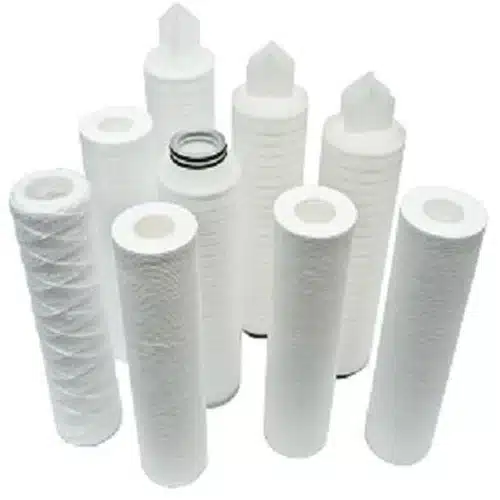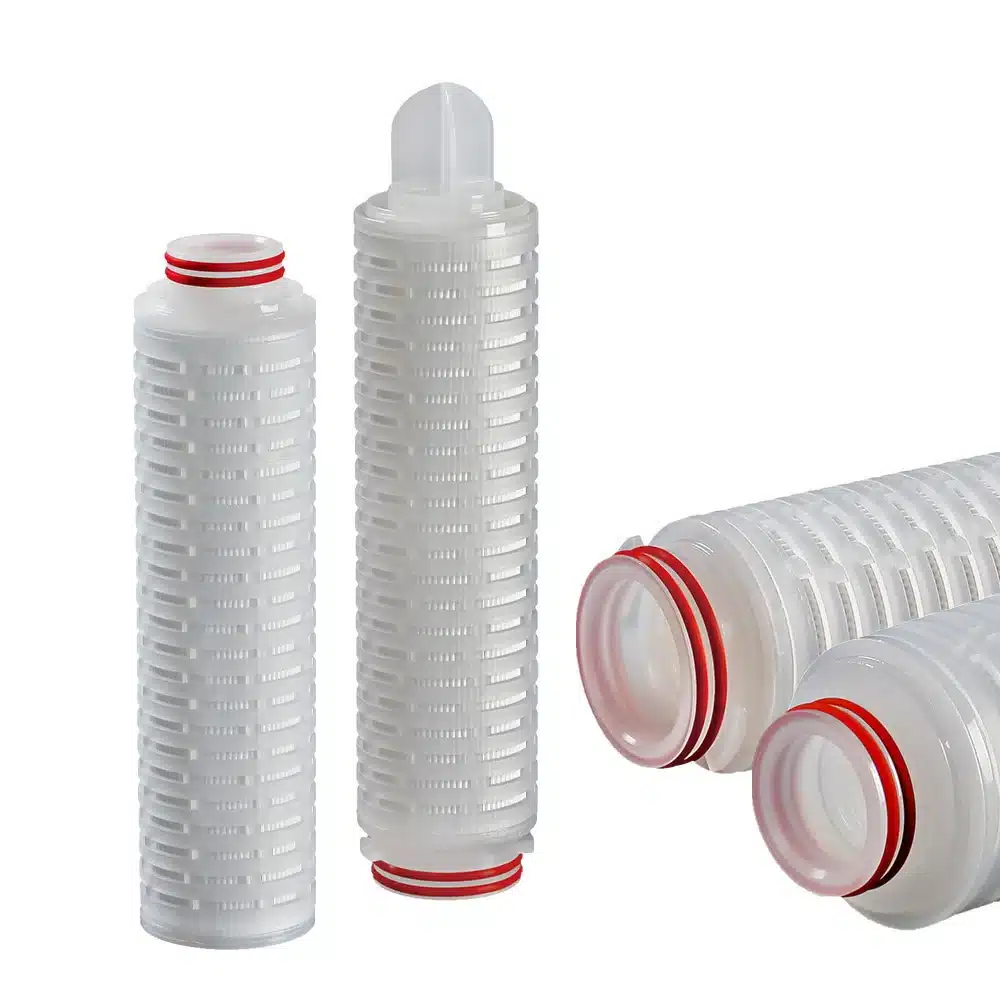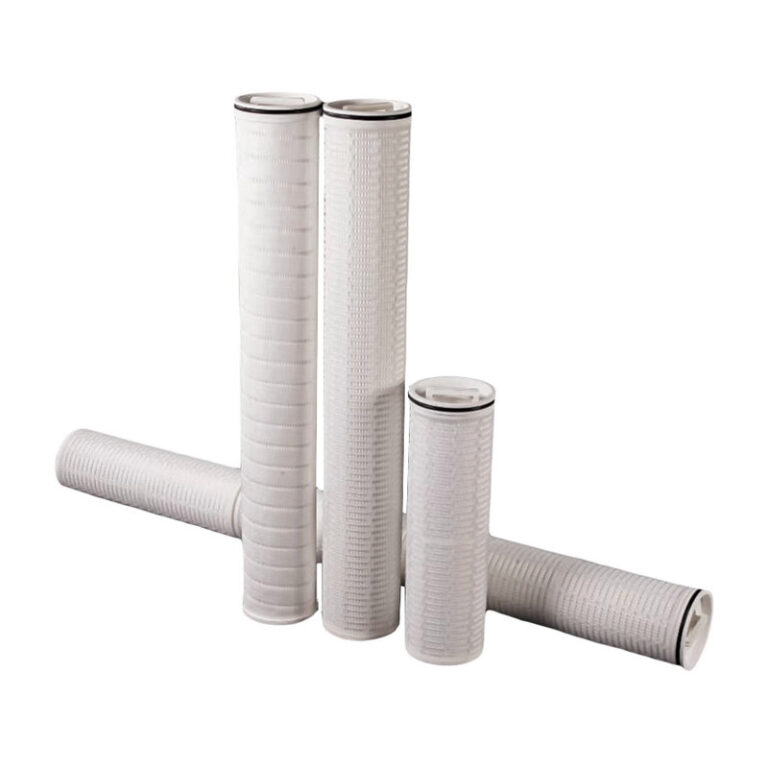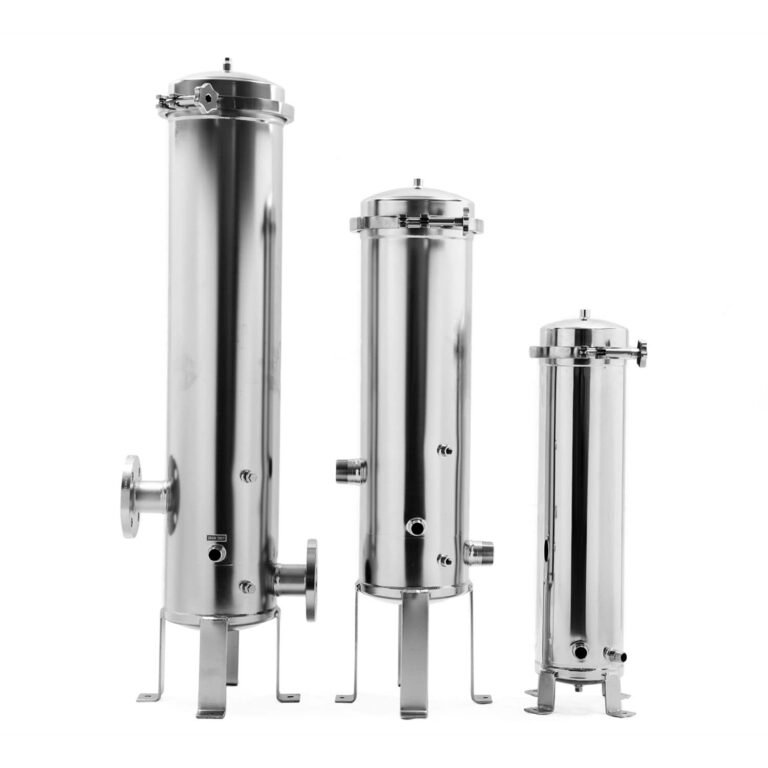Pleated Filter Cartridge Maintenance and Replacement
OVERVIEW
In every liquid and gas filtration process, pleated filter cartridges play a vital role in ensuring the purity and reliability of the final product. However, even the most advanced filter cartridge will lose efficiency over time due to accumulated contaminants, pressure fluctuations, and chemical exposure. Proper maintenance and timely replacement of pleated filter cartridges are essential to maintain consistent system performance, minimize downtime, and ensure compliance with quality standards.
This article provides a comprehensive guide to pleated filter cartridge maintenance and replacement — including inspection methods, cleaning procedures, replacement schedules, and troubleshooting tips. It also explores best practices across industries like water treatment, pharmaceuticals, food & beverage, and petrochemical processing.
Understanding the Importance of Filter Cartridge Maintenance
Regular maintenance of pleated filter cartridges is not just a cost-saving measure — it’s a performance assurance strategy. When filters become clogged or damaged, the system must exert more energy to push fluid through, leading to:
Increased pressure drop
Reduced filtration efficiency
Potential contamination bypass
Higher energy consumption
Shorter equipment lifespan
Preventive maintenance ensures:
Optimal system performance
Longer cartridge life
Consistent product quality
Reduced operational costs
Neglecting cartridge maintenance can lead to serious process issues, such as microbial growth in water treatment, contamination in pharmaceuticals, or fouling in industrial systems.
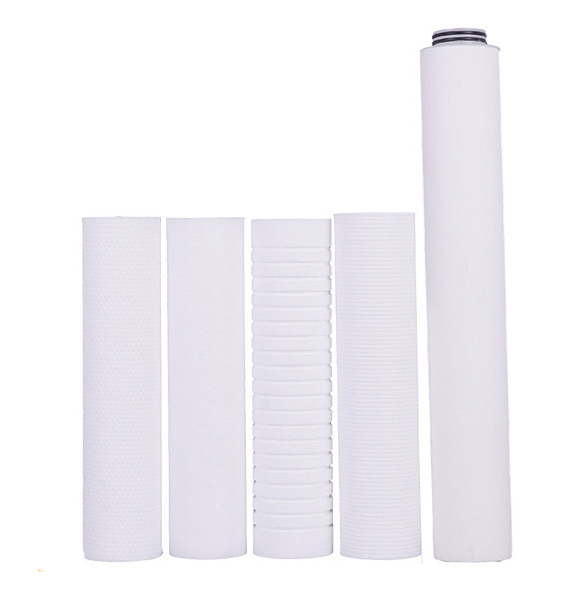
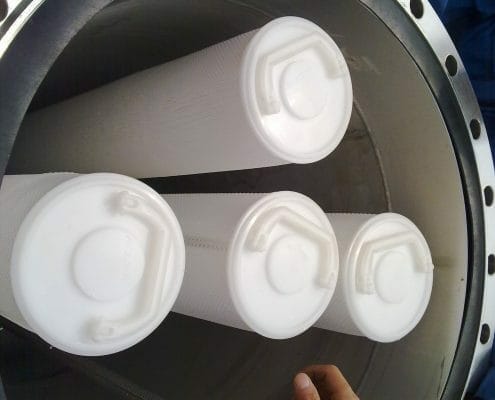
Key Indicators That a Filter Cartridge Needs Maintenance or Replacement
Knowing when to clean or replace your pleated filter cartridge is critical. Here are some of the most common indicators:
2.1 Increased Differential Pressure
The most reliable signal is a rise in pressure differential (ΔP) across the filter. When the pressure drop exceeds the manufacturer’s recommended limit, the cartridge is clogged and must be cleaned or replaced.
2.2 Reduced Flow Rate
If your system’s flow rate declines despite constant pressure and pump performance, it likely indicates filter blockage.
2.3 Product Quality Degradation
An increase in turbidity, particulate matter, or contamination level suggests that the cartridge media is saturated or damaged.
2.4 Visual Inspection Results
Discoloration, deformation, or cracks on the pleated surface or end caps indicate that the cartridge has reached the end of its service life.
2.5 Process Changes
When the filtered fluid changes (new chemical, temperature shift, or pH alteration), the existing filter may lose compatibility and require replacement.
3. Maintenance Procedures for Pleated Filter Cartridges
Pleated filters can often be maintained and reused if handled correctly — especially in water or general industrial applications. Here’s how to do it properly.
3.1 Pre-Maintenance Preparation
Shut down the filtration system and relieve internal pressure.
Isolate the housing and drain any remaining fluid.
Remove the cartridge carefully to avoid damaging pleats.
3.2 Cleaning Process
Step 1: Rinsing
Rinse the filter cartridge with clean water (preferably filtered water) in the reverse flow direction to dislodge trapped particles.
Step 2: Chemical Cleaning (if applicable)
For more stubborn fouling:
Use a mild alkaline solution for organic contaminants.
Use a citric acid or dilute acid solution for scaling or inorganic fouling.
Avoid strong oxidizers (e.g., chlorine) unless the cartridge material is specifically rated for it.
Step 3: Ultrasonic Cleaning (optional)
In high-precision applications, ultrasonic cleaning can help remove fine particles lodged deep within pleats.
Step 4: Final Rinse
Flush the cartridge thoroughly with deionized (DI) or RO water to remove residual cleaning agents.
Step 5: Drying
Allow the cartridge to air-dry in a clean environment, or use low-pressure air (<30 psi) to speed up the process.
For chemical compatibility data, consult Pall Corporation’s Material Compatibility Guide.
4. Inspection and Quality Check Before Reinstallation
Before reinstalling or reusing a cleaned cartridge, perform a quality inspection:
4.1 Visual Examination
Check for tears, cracks, or deformed pleats.
4.2 Integrity Test (Optional for Critical Systems)
Perform a bubble point test or diffusion test to ensure filter integrity — particularly in sterile filtration systems.
4.3 O-Ring and End Cap Inspection
Ensure o-rings and gaskets are intact and not hardened or cracked. Replace seals if necessary.
4.4 Confirm Proper Fit
Verify that the cartridge fits snugly in the housing without leaks or bypass paths.
5. Recommended Replacement Intervals
While cleaning can extend cartridge life, replacement is inevitable. The replacement frequency depends on several factors:
| Application | Typical Replacement Frequency |
|---|---|
| Drinking water filtration | Every 3–6 months |
| RO system pre-filtration | Every 2–4 months |
| Food & beverage production | Every batch or cleaning cycle |
| Pharmaceutical/biotech | After each validated production run |
| Chemical/petrochemical | Based on ΔP or contamination load |
Rule of thumb: Replace the cartridge when the pressure drop increases by 50% above the clean baseline or when performance no longer meets quality standards.
6. Proper Replacement Procedure
Step 1: System Shutdown
Stop fluid flow and relieve system pressure.
Step 2: Drain and Open Housing
Drain liquid from the housing to prevent contamination or spills during removal.
Step 3: Remove Old Cartridges
Extract used cartridges carefully to avoid releasing trapped contaminants back into the housing.
Step 4: Clean the Housing
Rinse or wipe the interior of the housing with a compatible cleaning agent to remove sediment and microbial growth.
Step 5: Install New Cartridges
Insert new pleated cartridges, ensuring proper orientation and o-ring sealing.
Step 6: Pressure Test
Before resuming operation, perform a low-pressure leak test to confirm proper sealing.
Step 7: Record Maintenance Data
Log replacement dates, pressure differentials, flow rates, and batch numbers for traceability.
For best practices on installation, review Filtration Group’s System Maintenance Guide.
7. Storage and Handling of Spare Filter Cartridges
To maximize shelf life and maintain performance:
Store cartridges in a dry, clean, temperature-controlled environment.
Keep in original packaging until installation.
Avoid direct sunlight and high humidity.
Do not stack heavy objects on top of cartridges to prevent deformation.
Under ideal conditions, pleated filter cartridges can be stored for up to five years without performance degradation.
8. Common Maintenance Mistakes to Avoid
Using the wrong cleaning chemicals – May damage polypropylene or PTFE membranes.
Exceeding temperature or pressure limits – Can deform pleats or break end cap bonds.
Ignoring O-ring wear – Causes leaks or bypass.
Reinstalling contaminated filters – Reduces performance immediately.
Skipping inspection – Fails to detect structural damage before reoperation.
9. Troubleshooting Filtration Problems
| Problem | Likely Cause | Corrective Action |
|---|---|---|
| Sudden pressure increase | Filter clogging | Clean or replace filter |
| Cloudy filtrate | Damaged pleats or bypass | Replace cartridge and inspect housing |
| Chemical incompatibility | Wrong cartridge material | Switch to compatible media (e.g., PVDF, PTFE) |
| Frequent clogging | Incorrect micron rating | Use a larger pre-filter or coarser cartridge |
| Leakage from housing | Faulty O-ring or misalignment | Replace seals and reassemble properly |
For troubleshooting and advanced solutions, refer to Water Quality Association’s Filtration Handbook.
10. Extending Filter Cartridge Lifespan
You can significantly extend the life of your pleated filter cartridges with proactive maintenance practices:
Install a pre-filter to remove large debris before the main cartridge.
Monitor differential pressure regularly.
Use compatible cleaning agents and procedures.
Rotate or replace filters systematically based on usage hours, not just failures.
Train operators in proper installation and maintenance techniques.
These measures can reduce operating costs by up to 30–50% in continuous filtration systems.
11. Industry Best Practices and Compliance Standards
Many industries have established maintenance and replacement protocols to ensure process integrity.
Pharmaceutical and Biotech: Follow USP Class VI and FDA 21 CFR material safety requirements.
Food & Beverage: Use NSF-certified or FDA-grade cartridges.
Water Treatment: Adhere to ISO 9001 quality management standards.
Industrial Processes: Implement regular audits per ISO 14001 environmental guidelines.
Compliance ensures product safety, regulatory approval, and customer trust.
12. Environmental Considerations for Disposal
Used pleated filter cartridges often contain contaminants, so disposal must comply with environmental regulations.
Non-hazardous filters: Can be disposed of as industrial waste after dewatering.
Hazardous filters: Must be handled as chemical waste per local regulations.
Recycling options: Some PP cartridges can be recycled after cleaning and shredding.
Implementing a filter recycling program can reduce waste and improve sustainability.
13. Conclusion
Regular maintenance and timely replacement of pleated filter cartridges are essential for ensuring consistent filtration efficiency, reduced downtime, and overall operational reliability. By monitoring differential pressure, inspecting cartridge condition, and following manufacturer guidelines, industries can significantly optimize performance and reduce long-term costs.
A proactive maintenance strategy not only enhances system reliability but also ensures compliance with global standards in water treatment, pharmaceuticals, food processing, and industrial operations.
Always follow manufacturer recommendations for cleaning and replacement intervals to maximize performance and protect downstream equipment.
14. Related Articles (Internal Links)
For further reading, explore related topics on our website:
How to Select Cartridge Filter Flow Rate for Filtration Need
Why Choose PP Pleated Filter Cartridge for Filtration System
Consider the Pleated Filter Cartridge Operating Conditions
Applications of PVDF Pleated Filter Cartridges
Depth Filter Cartridge vs Pleated Cartridge: Complete Comparison
Request a Free Sample or Quote Today
Are you sourcing high-quality depth filter cartridges at competitive prices? Contact us today for a free sample or quotation. We offer short lead times, factory direct pricing, and full technical support. Let’s help you optimize your filtration process with reliable, affordable, and efficient filter solutions.

